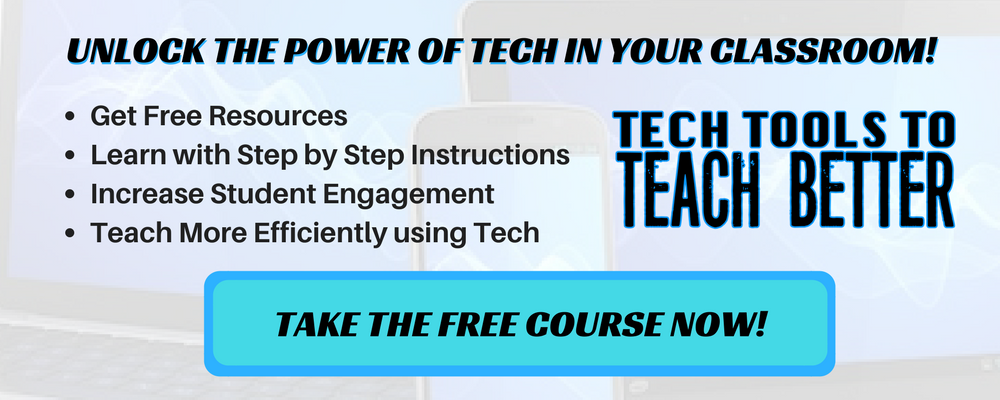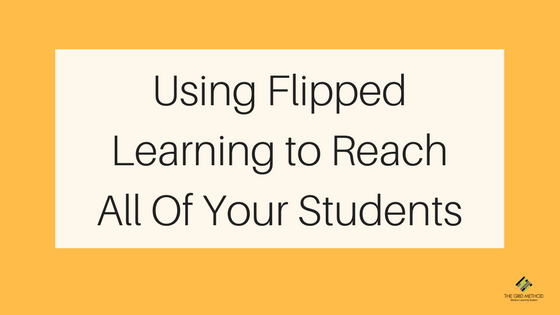What Is Flipped Learning?
In 2007, two high school chemistry teachers from Colorado grew tired of reteaching content to absent students. The advent of screencasting tools and online videos through YouTube inspired Jonathan Bergmann and Aaron Sams to record their lectures and share them online. Thus was born the flipped learning model.
Fast forward a decade and you would be hard pressed to find an educator who did not have at least some familiarity with flipped learning. The basic premise seems straightforward enough: Students are first exposed to new content, not in the classroom, but at home. This frees up time during class to address confusion. You can now spend your class time helping students grapple with the content rather than exposing them to the content. Students get to work through their understanding of the content during class with you their to support them, not while puzzling over practice for homework.
Flipping My Class
In 2011, I discovered this idea for the first time. Appropriately, I learned about the flipped classroom model by watching a YouTube video. (Yes, that exact one.) I knew immediately that this was the approach I had been looking for. Most who know me are aware that I tend to leap before I look. I dive in to new ideas even if I don’t have all the details sorted out. And so that is exactly what I did. Two weeks before the school year started, I decided to flip my class to flipped learning.
For the next two years, I rarely assigned homework that was not watching a video. Students would watch a short recorded lecture, take notes, and then answer a question or two that I assigned through Edmodo. These early videos were not the most breathtaking cinematic experiences, but they did the job. I was able to spend my entire 45 minute class helping students with what they didn’t understand. It seemed to make so much more sense than spending 25 minutes of that time at the front of the room explaining an idea.
My students’ test scores skyrocketed. I knew my students’ learning better than I ever had before. I was able to tailor my plans for the day to their needs. In short, it was awesome.
You see, the flipped learning model is one that is inherently a mastery learning model. That is the reason why it was so successful in my classroom. Click To TweetReaching Them All
All of this was very exciting, but what really set me on fire for flipped learning was the effect it was having on my outlier students. As teachers, we know that differentiation is important. We receive countless professional development on it. We struggle and strive to create learning experiences that meet the needs of a wide variety of students. But I think most of us know we rarely succeed in crafting lessons that meet the wide range of abilities that we have in our rooms.
What I started to notice with flipped learning was that my outlying populations were experiencing insane amounts of growth. I’m talking mind-boggling, everyone is in the green, supercharged kind of growth. There didn’t seem to be a population I couldn’t reach with flipped learning.
[scroll down to keep reading]
Struggling students…
Finding a way to reach students significantly below grade level is, to put it lightly, challenging. There is just never enough time, resources, time (did I mention that already?), or support to do a really good job of it. Until, that is, I started using flipped learning.
My students who struggled finally had a chance to get the support they needed during class. When a kid came in with no understanding of the previous night’s video, they had the time they needed to have it explained in a different way with others who were at the same level of understanding. I was better able to monitor their progress towards understanding. They couldn’t hide!
Because I wasn’t wasting my time and my breath standing in front of the whole class, I could actually spend the entire 42 minute period working one-on-one and in small groups guiding students on their individual learning paths. They may not have been able to hide, but they sure were better able to learn in that environment!
…and Gifted Students
Gifted students often spend a significant chunk of their time sitting through class listening to someone talk about a concept they understood 40 minutes ago (in a 42 minute class). Flipped learning has allowed my gifted and advanced students who already knew the content to spend the entire class period extending and enriching their understanding. Studying slope in 7th grade math? Let’s kick it up to some 8th grade content about about writing equations. Or how about some explorations of interpreting what slope means in real world situations. Have a graph plotting speed and time of a bike ride? What does a positive slope mean? A negative slope? Students were able to push themselves to their limits mathematically- something that doesn’t happen often in the classroom for gifted students.
The coolest thing to happen with my gifted and advanced learners? They couldn’t hide either! Because each day was built on how well the students understood the content from the night before, there were no assumptions about what my gifted students knew. If they didn’t understand a concept, they got intervention and extra practice- just like every other student who also didn’t understand.
What’s the Catch?
If you have hung in there with me so far, you can probably tell that I like flipped learning. Here is the thing, though, it really isn’t flipped learning that I flip out about. Sure, using a flipped class approach is awesome. Recording videos and sharing them with students is a smart move. Providing appropriately challenging content for students is a must-do in education. But it isn’t so much about the flipped learning method, it is all about the philosophy you have about learning and teaching in general. At the root of a flipped learning model is the idea of mastery learning.
Mastery learning is, in its most simple form, identifying what students know (and don’t) and designing a learning path for them that meets their needs. Frequent formative assessment (the daily questions students answered after watching a video for my class) is key. Feedback and targeted instruction are happening constantly. Students move on to more challenging material only when they are ready, when they have mastered prior content.
You see, the flipped learning model is one that is inherently a mastery learning model. That is the reason why it was so successful in my classroom. That is the key lesson. When you use a mastery learning approach, no matter what its form, students can thrive in the learning that is appropriate to their needs.



